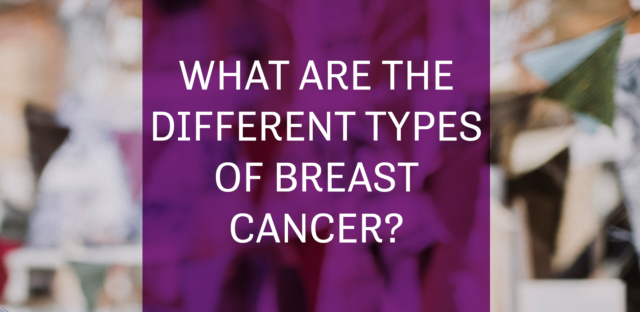There are different types of breast cancers –
1. Invasive breast cancer (NST – No specific type)
In this cancer, the cells grow through the inner lining of the ducts into the surrounding breast tissue and the area. Given that these cancers have no specific features, they are classified as No Special Type. They were previously called invasive ductal carcinoma. Around 70% of all invasive breast cancers are of this type. This type of cancer is diagnosed after looking under the microscope to observe the cells and their particular features.
The symptoms of breast cancer include:
- breast thickening accompanied by an armpit swelling
- change in size or feel of the skin around the breast
- changes in the breast skin such as puckering, dimpling, an itchy rash of the skin
- fluid leaking from the nipple (when the woman isn’t pregnant)
- changes in the positioning of the nipple
Treatment:
To formulate a treatment protocol the doctors generally focus on:
- the type of breast cancer
- the size of cancer and its stage and grade (upon microscopic examination)
- Whether the cancer cells have receptors which are then used for targeted cancer drug therapy.
For invasive breast cancer, the options can be –
- Surgery of the breast
- Radiotherapy
- Chemotherapy
- Hormone therapy
- Targeted drug therapy
2. Invasive lobular breast cancer
This type of cancer develops in the cells lining the lobules and cancer spreads to the surrounding breast tissue. The lobules have the glands that make milk when a woman is breastfeeding. Lobular carcinoma in situ (LCIS) is different that Invasive lobular breast cancer.
Symptoms might be –
- Invasive lobular breast cancer doesn’t usually form a firm lump. The patient is more likely to have a thickened area around the breast tissue.
- An area of thickening and/or swelling around the nipple, they can become inverted.
- Changes in the skin, causing as dimpling or thickening
Treatment-
The treatment for invasive lobular breast cancer is very similar to most of the breast cancer, including a surgery to remove the tumour along with a lining of the surrounding area of healthy tissue. This procedure is called breast-conserving surgery. If the cancer is spread in areas greater than the breast, then it might not be possible for the doctor to do a conservative surgery. In these cases, the removal of the whole breast (a mastectomy) is recommended. Meanwhile, breast reconstruction is also advised to such patients.
3. Inflammatory breast cancer
This is a rather rare type of breast cancer. The cancerous cells will block the smallest lymph channels of the breast resulting in the skin to become red and inflamed. The lymph ducts normally drain excess tissue fluid away from the breasts and in case that they become blocked, the swelling is seen. Around 1 to 5 cases in 100 are inflammatory breast cancers.
Symptoms include –
- Given that the lymph channels are blocked, red firm swellings are noticed in the breast.
- These areas are hot and can also be painful to touch.
- Ridges of the skin are seen, which seem like orange peel
- The nipple might be inverted in these cases also
Treatment for inflammatory breast cancer –
The treatment for inflammatory breast cancer is slightly different –
- Chemotherapy – is the first line of treatment. It is known as neoadjuvant chemotherapy which helps to control the growth of cancer cells thereby reducing the swelling.
- Surgery – After chemotherapy, if the cancer is still not completely eliminated, the patient might be advised to get the whole breast removed (a mastectomy). While removing the breast, the patient also gets their armpit lymph nodes removed.
5. Breast Angiosarcoma
Breast angiosarcomas are the cancers that form in the blood-forming walls of the breast. They are very rare, only around 1%. It is most common in women, but some cases have been reported in male gender also. They are divided into:
- Primary angiosarcoma – Primary angiosarcoma of the breast is more common in the age group of 30-40 years. They start in the breast tissue increasing up to the surrounding tissues.
- Secondary angiosarcoma – They are secondary cancers that arise due to the radiation therapy of a primary tumor.
They are more common in older women and are very likely to grow quickly.
Symptoms –
- Thickening in an area of the breast
- Change in the size of a breast, resulting in dimpling of the skin
- Change in the shape of the nipple
Angiosarcomas lead to changes in the skin colour of the surrounding area.
6. Ductal Carcinoma in-situ (DCIS)
This type of cancer starts when in the lining of the ducts. The cells in the ducts start to become cancerous. These cells are contained inside these ducts and yet have not started DCIS is described in different ways including –
- Pre-invasive
- Non-invasive
- Ductal intraepithelial neoplasia
- Intraductal cancer.
In some people, if left untreated, this becomes invasive cancer. Although DCIS does not spread to the adjoining tissue, there is a chance it spreads to the nearby lymph nodes.
The symptoms are very limited. The patient might feel a lump in the breast and some discharge from the nipple which might be blood-stained.
Lobular carcinoma in situ (LCIS)
It is the type of cancer in which the cells inside the breast lobules start to work abnormally. These glands make breast milk. The abnormal cells are present within the inner lining of the lobules. This could be present in both breasts. This is not a severe form of cancer, but it increases the incidence of having a future cancer development in the breasts.
Cost of breast cancer treatment in India depends on the following factors –
- Type of cancer diagnosed
- Treatment plan formulated
- Age of the patient
- If there is a recurrence, repeat radiation or chemo can increase the price









